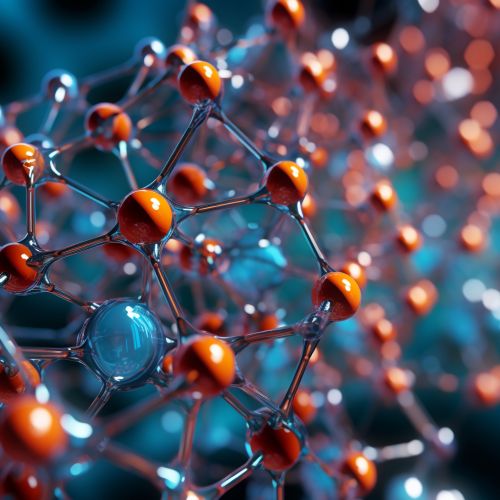Molecular Self-Assembly
Introduction
Molecular self-assembly is the process by which molecules adopt a defined arrangement without guidance or management from an outside source. This process is a fundamental concept in nanotechnology and supramolecular chemistry, as it allows for the creation of complex structures with minimal intervention.
Principles of Molecular Self-Assembly
Molecular self-assembly is primarily guided by the minimization of free energy. The system is driven towards equilibrium, and the assembled molecular structure is typically the one that is thermodynamically most stable. The forces involved in molecular self-assembly are typically non-covalent, including hydrogen bonding, metal coordination, hydrophobic forces, Van der Waals forces, π-π interactions, and electrostatic effects.
Types of Molecular Self-Assembly
There are two primary types of molecular self-assembly: intramolecular self-assembly and intermolecular self-assembly.
Intramolecular Self-Assembly
Intramolecular self-assembly involves the folding of a single molecule into a specific shape or conformation. This process is crucial in the folding of proteins and the formation of secondary, tertiary, and quaternary structures.
Intermolecular Self-Assembly
Intermolecular self-assembly involves the assembly of multiple molecules into a larger complex. This process is fundamental in the formation of micelles, vesicles, and bilayers, as well as the assembly of DNA into a double helix.
Applications of Molecular Self-Assembly
Molecular self-assembly has a wide range of applications in various fields, including nanotechnology, materials science, and biology.
Nanotechnology
In nanotechnology, molecular self-assembly is used to create nanostructures and nanodevices. This process allows for the bottom-up fabrication of complex structures with precise control over their size, shape, and functionality.
Materials Science
In materials science, molecular self-assembly is used to create supramolecular materials with unique properties. These materials can be designed to have specific mechanical, optical, or electronic properties, making them useful in a wide range of applications.
Biology
In biology, molecular self-assembly is a fundamental process in the formation of complex biological structures. This process is involved in the formation of cell membranes, the folding of proteins, and the assembly of DNA and RNA.
Challenges and Future Directions
While molecular self-assembly has shown great promise in the creation of complex structures and materials, there are still many challenges to overcome. One of the primary challenges is controlling the self-assembly process to ensure the formation of the desired structures. Additionally, there is a need for more efficient methods for the synthesis of the building blocks used in self-assembly. Despite these challenges, the field of molecular self-assembly continues to grow and evolve, and it is expected to play a crucial role in the development of future technologies.
See Also


